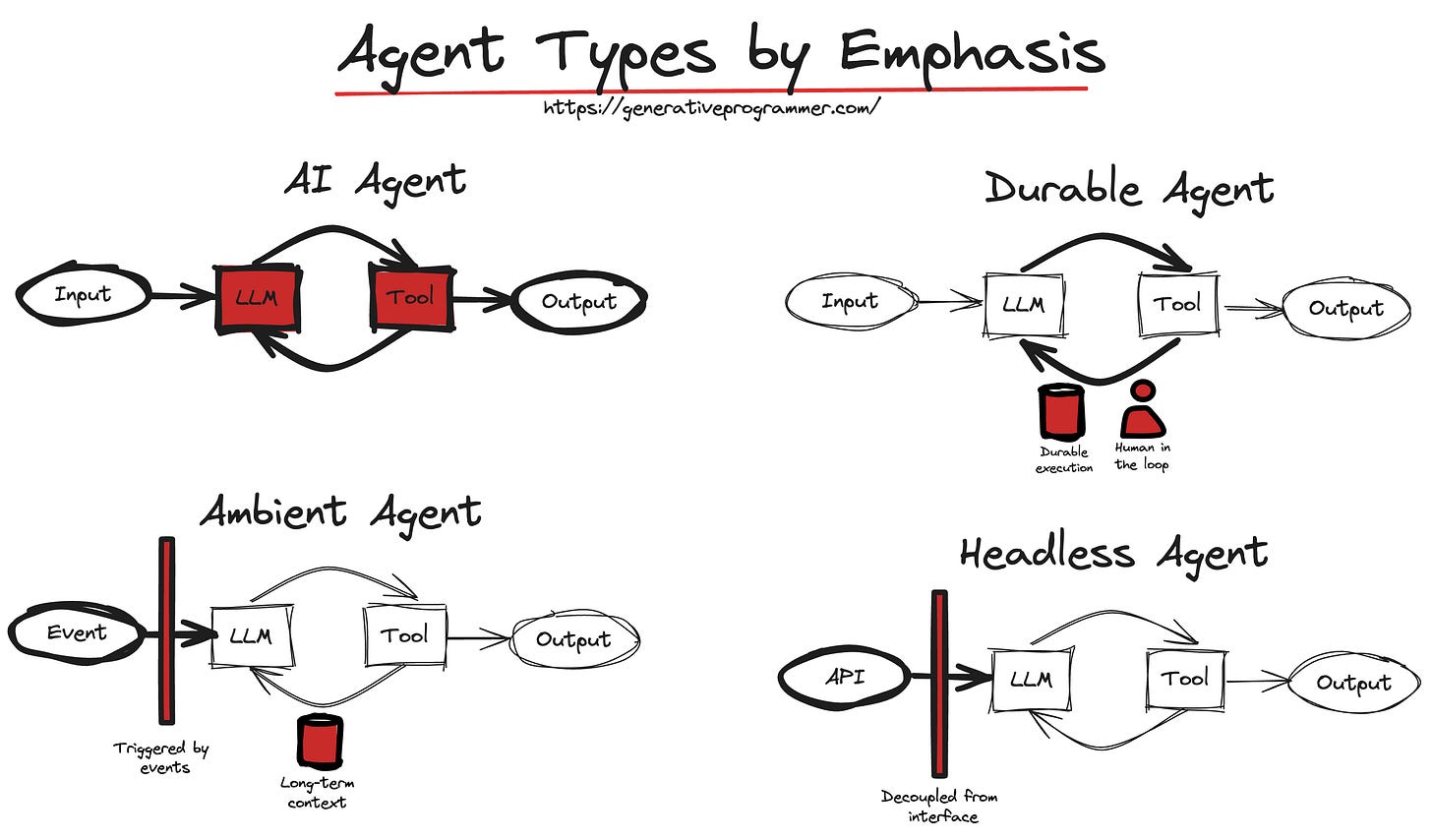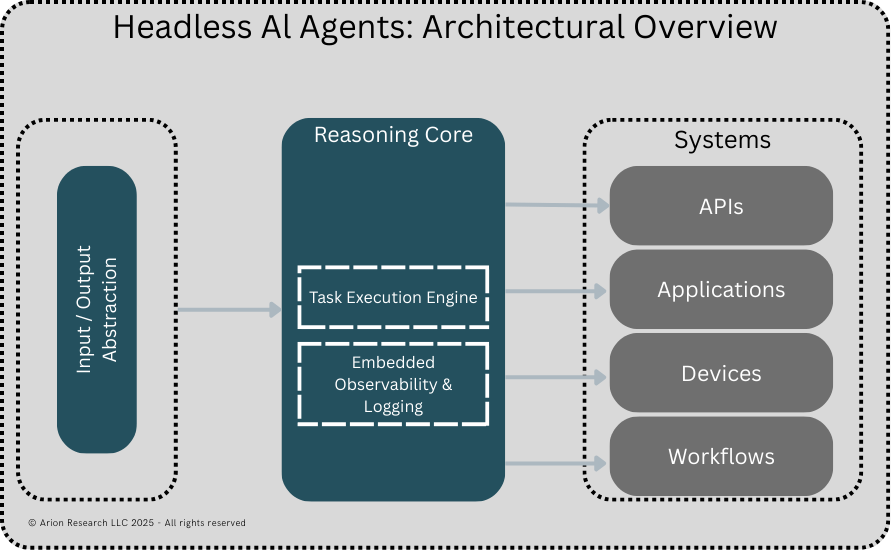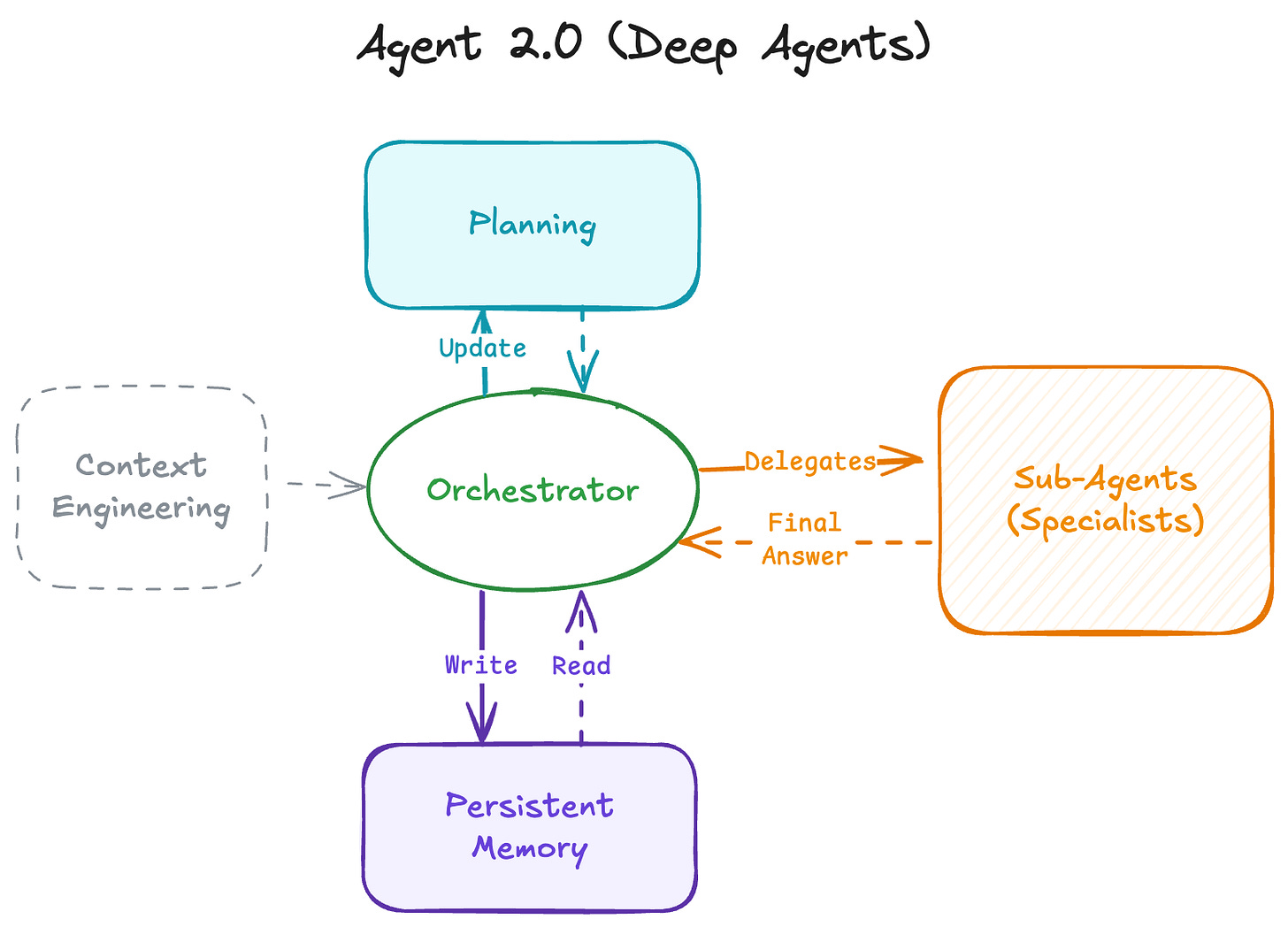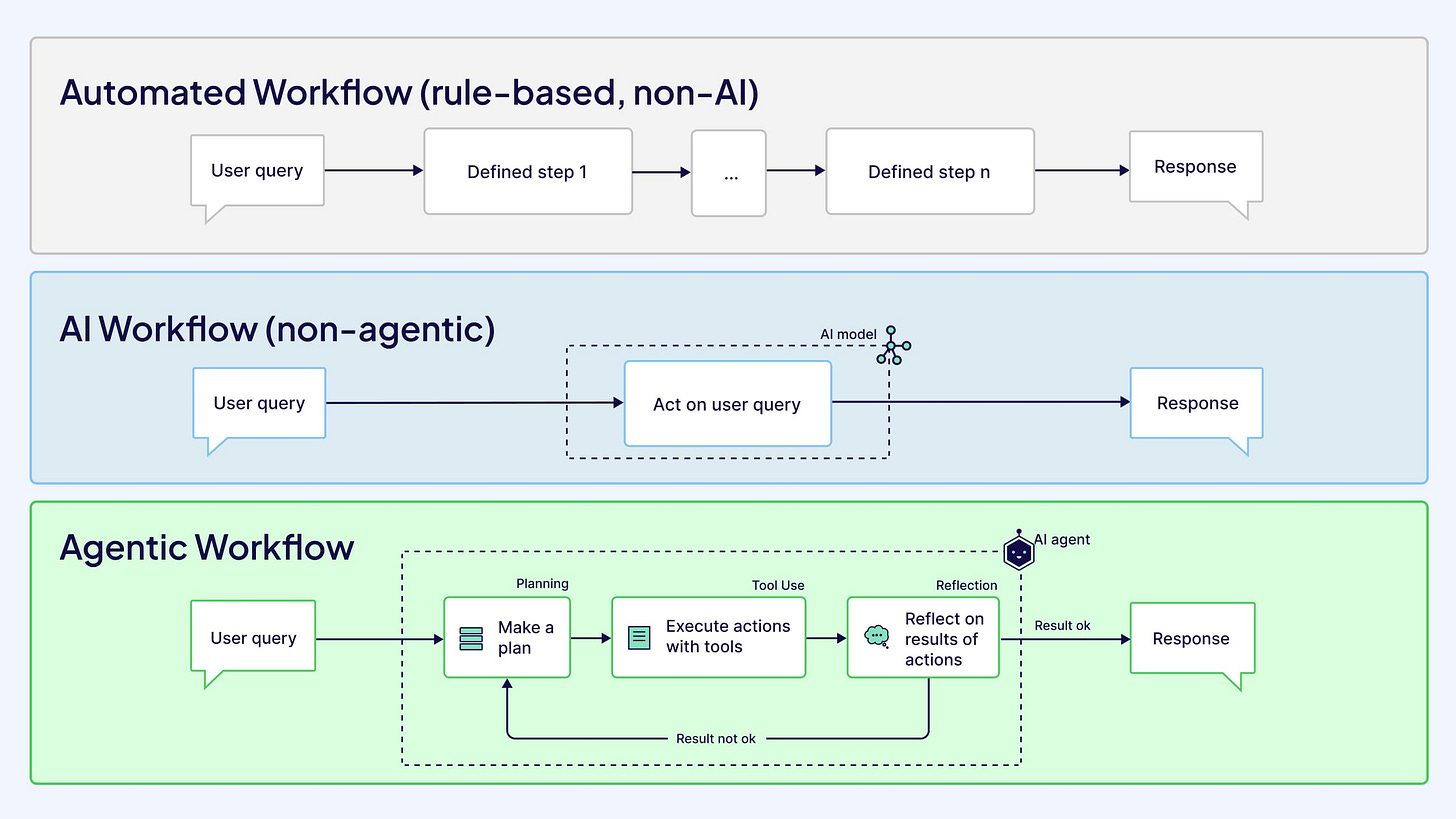Taxonomy of AI Agents: Headless, Ambient, Durable, and Beyond
A Practical guide to the new agentic vocabulary
Terms like headless, ambient, and durable agents are popping up everywhere, but often used inconsistently. Before we get lost in the hype, it’s worth aligning on what these terms actually mean and what they truly emphasize.
🤖 What is an Agent?
The concept of software agents is not new. One of the earliest formal definitions comes from the influential 1996 paper “Is it an Agent, or just a Program? A Taxonomy for Autonomous Agents” by Stan Franklin and Art Graesser. In it, the authors proposed a formal distinction between agents and traditional programs, describing agents as:
“...autonomous systems that perceive their environment, act upon it, and pursue goals.”
(Franklin & Graesser, 1996, Third International Workshop on Agent Theories, Architectures, and Languages)
Fast forward nearly three decades, and the concept of an “agent” has become central to AI system design, especially with the rise of LLM-based agents.
A short and practical definition comes from Simon Willison in his post ‘agent’ may finally have a meaning”:
“An LLM agent runs tools in a loop to achieve a goal.”
This is also my favourite definition and it captures the essence of modern AI agents: they combine language models with external tools to reason, act, and iterate toward objectives.
Meanwhile, Gartner offers a more enterprise-aligned definition in their 2024 report “When to Use or Not to Use AI Agents”:
“AI agents are autonomous or semiautonomous software entities that use AI techniques to perceive, make decisions, take actions, and achieve goals in their digital or physical environments.”
In practice today, agents are often built on loop-based architectures, capable of planning, executing actions (e.g., calling APIs or tools), and learning over time. From LLM-powered assistants to multi-agent ecosystems, the agent model is a foundational pattern in building goal-driven AI systems.
🧩 Headless Agents
Headless agents emphasize a specific aspect of intelligence — decoupling it from any fixed (usually a chat) interface. As commonly defined:
“Headless AI agents are intelligent systems that operate without a fixed user interface, with their functionality exposed primarily through APIs or embedded directly into business systems and workflows.”
Just like a headless CMS separates content from presentation, headless AI agents separate intelligence from interaction. This allows developers and organizations to build AI capabilities once and deploy them invisibly across channels, web apps, backend services, IoT devices, and more, without duplicating logic or tying intelligence to a specific UI.
Key characteristics:
Interface-agnostic intelligence: Reasoning and decision-making not tied to any specific UI, enabling reuse across channels.
API-first operation: Invoked via APIs, events, or embedded logic, often running invisibly within larger workflows.
Functionality over conversation: Unlike chatbots, their focus is performing tasks, not holding conversations.
Salesforce was among first to introduce a Headless Agent API, making this concept mainstream for enterprise-grade automation.
📡 Ambient Agents
Ambient agents are a specific type of headless agent that emphasize operating in the background, autonomous initiation, and context awareness.
As described by LangChain:
“Ambient agents listen to an event stream and act on it accordingly, potentially acting on multiple events at a time.”
These agents run quietly in the background, activated by signals, incoming emails, data updates, system triggers, or scheduled events, rather than human prompts.
They maintain full context awareness, tracking both current system states and past interactions to make informed, autonomous decisions.
When necessary, they introduce a human-in-the-loop through structured prompts such as:
Notify: “Here’s something important you should see.”
Question: “I need your input to proceed.”
Review: “Here’s what I plan to do — approve or edit?”
Other key characteristics include persistent memory, tool-driven actions, multi-agent orchestration, and durability across long-running workflows.
In essence, ambient and headless agents share the same foundation of interface-free intelligence, but ambient agents place stronger emphasis on proactive, event-driven operation and human collaboration — making the two terms largely interchangeable in practice.
💾 Durable Agents
Durable agents emphasize durable execution, in contrast to non-durable agents, where execution state is typically held in memory and lost on failure or restart.
Durable agents persist their full execution history, allowing them to recover gracefully from crashes, restarts, or API failures without restarting the task or repeating actions.
As described by Pydantic AI:
“Durable agents can preserve their progress across transient API failures and application errors or restarts, and handle long-running, asynchronous, and human-in-the-loop workflows with production-grade reliability.”
Durability involves persisting not only the conversation history, but also every LLM call and tool invocation — so the agent can resume exactly where it left off. This avoids re-executing steps that may have side effects or lead to duplication which is a common problem in non-durable frameworks.
Different agentic frameworks achieve durability differently. For example, Pydantic integrates with systems such as Temporal, DBOS, and Prefect. In contrast, Dapr Agents, offer native support for durability via a built-in DurableAgent type. This agent type combine multiple traits:
Headless – invokable via REST APIs, with no fixed interface
Ambient – can be triggered by an event stream
Durable – backed by a persistent workflow engine
Other frameworks offering durability include: Convex and Restate.
🧠 Deep Agents
Deep agents are an evolution of traditional (shallow?) agents with a goal to handle complex, multi-step tasks by combining planning, memory, and delegation. In reality, these are multi-agent systems with specialized sub-agents, and that’s an implementation detail.
As Philipp Schmid summarizes:
“These systems do not just react in a loop. They combine agentic patterns to plan, manage persistent memory/state, and delegate work to specialized sub-agents to solve multi-step, complex problems.”
Core components:
🗺️ Planning: Maintain an explicit task plan (a to-do list) that updates dynamically.
🧩 Sub-agents: A central orchestrator delegates tasks to specialized sub-agents (researcher, coder, writer, etc.).
💾 Persistent memory: Use external stores (files, vector DBs) to retain state and share results across steps.
This architecture makes deep agents more robust and modular, shifting design from reactive prompting to proactive problem solving.
⚙️ Agentic Workflow
This is not an agent type, but how some agents operate. There are still conflicting definitions of Agentic Workflows. I ran a poll asking:
What is an Agentic Workflow?
1️⃣ A deterministic workflow where agents execute predefined steps.
2️⃣ A human-defined goal, where an agent dynamically plans and executes a workflow to reach it.
After the discussion, the consensus leaned strongly toward option 2 — a human-defined goal where an agent dynamically plans and executes a workflow to reach that goal.
Here is a concise definition from IBM (with Weaviate offering a similar one):
“Agentic workflows are AI-driven processes in which autonomous AI agents make decisions, take actions, and coordinate tasks with minimal human intervention. They use reasoning, planning, and tool use to execute complex, dynamic, multistep workflows that adapt to real-time data and changing conditions, unlike traditional rule-based automation.”
— IBM,
In short, agentic workflows are when agents define a plan (workflow) and runs itself, reasoning, adapting, and acting toward a defined goal.
This is a fast-moving space and new terms appear weekly. If you come across a new agentic concept or definition that deserves to be added here, share it. I’ll keep updating this post as the vocabulary evolves.





